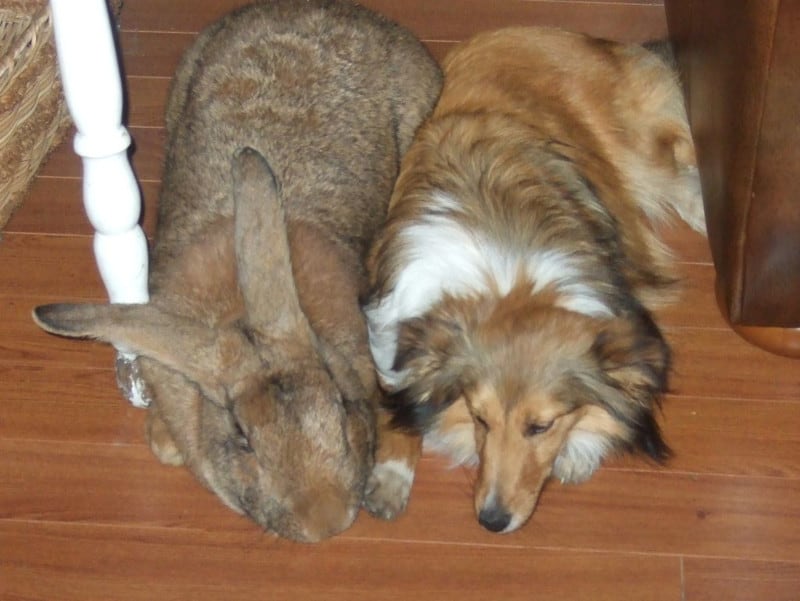
Flemish Giant Rabbit Facts
- Most notably, the astounding Flemish Giant Rabbit currently holds the popular title of the King of Rabbits. Many individuals assign this unofficial title to the creature because it reigns supreme as the largest species of rabbit presently known to man. Furthermore, these very docile giants have also been bred since the early 16th century, chiefly for their size.
- Today, however, the majority of people primarily breed the animal as a pet and show animal. For the record, the latter of these two we consider to be quite an unfortunate practice. Some people also refer to the remarkable animal popularly as the Gentle Giant. The use of this term occurs due to its extreme docility, even compared to related species.
- Additionally, the possibility also exists that this fascinating species descended from the now extinct Patagonian rabbit. However, some scientists consider the evidence for this to currently be insufficient. But, regardless of its own origins, the Flemish Giant Rabbit actually represents the ancestor of many of the breeds of domestic rabbits popular today.
Related Articles
Flemish Giant Rabbit Physical Description
First of all , the incredible Flemish Giant Rabbit attains a truly giant size for a rabbit. That’s because the fabulous mammal attains a typical weight of about 15 lb (6.8 kg). Yet, exceptional individuals of this particularly impressive species occasionally reach weights totaling as much as an astonishing 22 lb (10 kg).
Secondly, the species does display slight degree of sexual dimorphism, much like most other related species. In its case, females typically attain a slightly greater weight than the males. The same females also usually reach a greater overall body length than the somewhat smaller males, as well.
In addition, the incredibly soft, luxurious fur of the animal may develop as any of seven color varieties. However, regardless of color, the fur itself typically appears rather glossy and quite dense. Meanwhile, the body remains elongated and the hindquarters develop relatively broad for a rabbit.
Further, the heads of the genders also display yet another form of gender-based physical variation. That’s because the heads of the two sexes have a decidedly different shape. As a result, the head of the male develops as much broader and larger than that of the female. Her head remains more streamlined in shape.
- Kingdom: Animalia
- Phylum: Chordata
- Class: Mammalia
- Order: Lagomorphs
- Family: Leporids
- Genus: Oryctolagus
Flemish Giant Rabbit Distribution, Habitat, and Ecology
Being a domestic breed, the the wonderfully lovely Flemish Giant Rabbit actually has no natural distribution. But, humans first bred its earliest descendants in Belgium, in Europe. The development of the breed originally occurred to create a convenient source of both fur and meat.
As with other types of rabbits, the surprising species feeds entirely as a herbivore. Quite understandably, the animal primarily consumes a rather wide variety of vegetables and fruits. It also displays a definite fondness for hay.
However, the comparatively massive animal does require a higher protein content than other rabbits. Quite surprisingly, it also remains even more tolerant of human handling than other rabbits. But, it’s not very tolerant of excessive heat.
Finally, this animal commonly reaches breeding age about 5 months after birth. Typically, litter size varies from between 5-12 young, for most females. This enormous and remarkable breed of rabbit also lives longer than most Leporidae, with a typical life expectancy of between 8-10 years.
Species Sharing Its Range
Check out our other articles on Astounding Lizards of the World, El Tatio, Psychedelic Frogfish, Balanophora coralliformis, Trogloraptor, Green Sea Turtle, Geoffroy’s Cat
